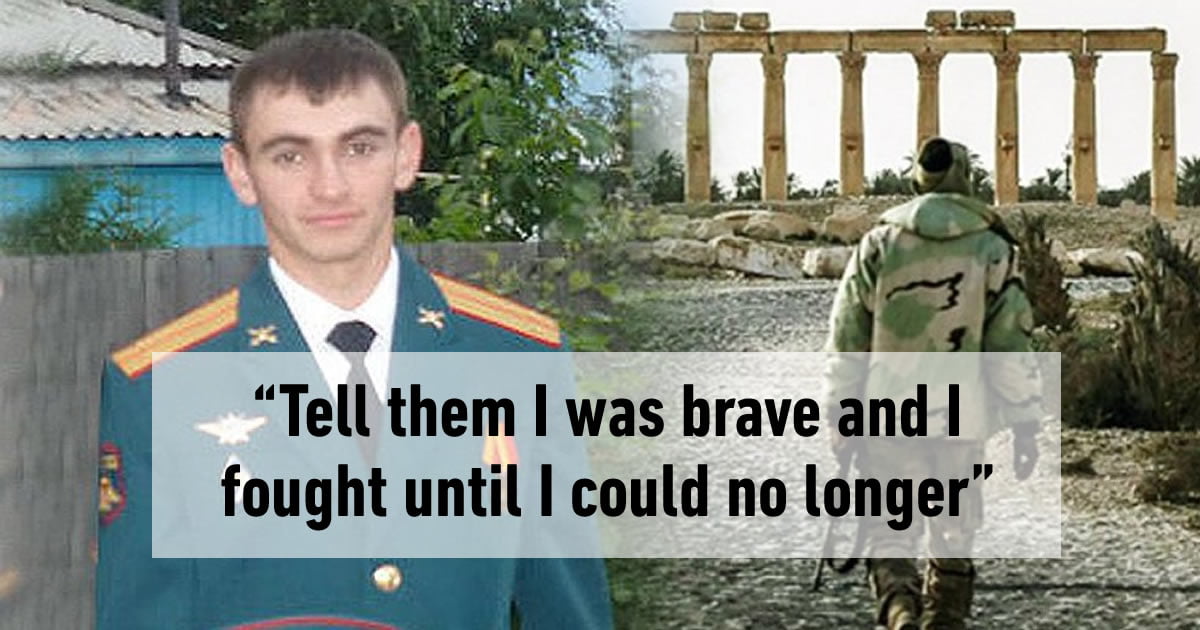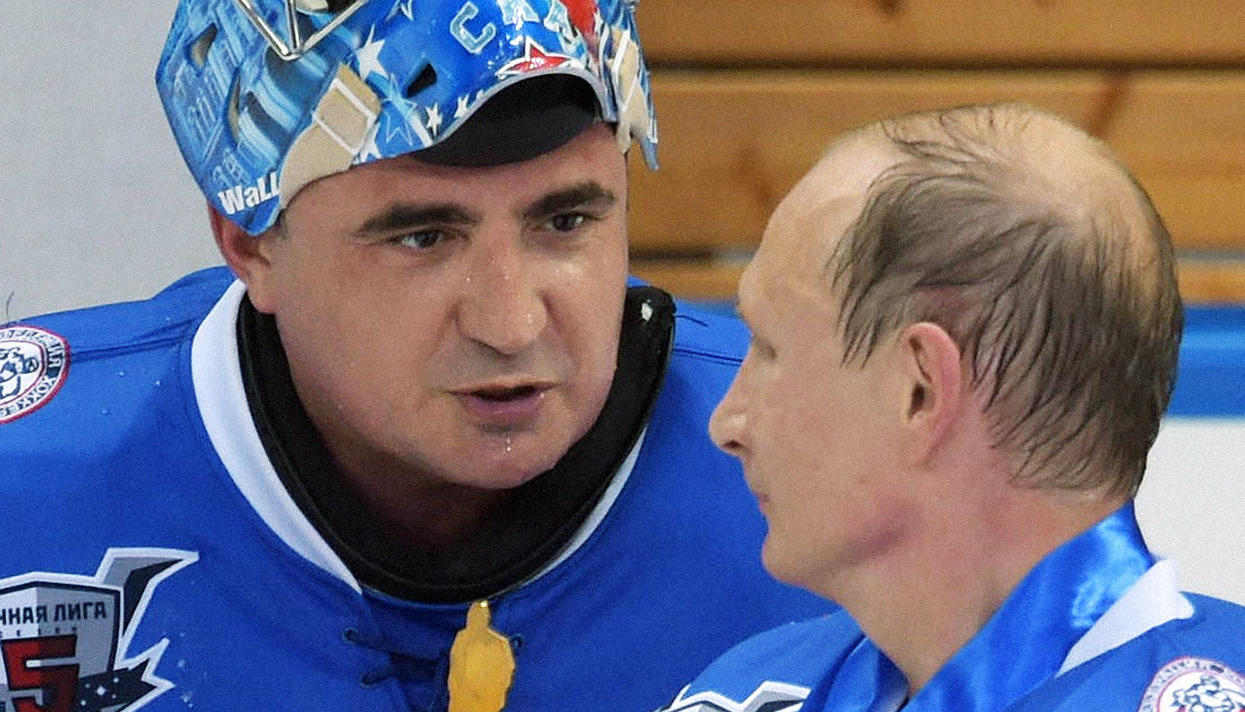On March 2, Syrian army forces wrestled control of Palmyra from Daesh [Arabic acronym for “ISIS” / “ISIL”] terrorists for a second time in less than a year.
In December 2016, the bulk of the Syrian army’s resources were focused on the battle for Aleppo, which served as the nerve center of the western-led effort to topple the Damascus government. Daesh capitalized on the opportunity and reentered Palmyra.
The joint Syrian-Russian preparations for another liberation of the city went on for a month. But the key battle lasted only 8 hours, while the entire operation took no more than 24 hours.
Syrian and Russian forces adopted a simple strategy. Knowing that the enemy was dug in around the northern section of Palmyra, the Russian air force focused their strikes precisely on these areas, leading Daesh to conclude that the ground offensive would come from the north. Instead, the initial wave of ground attacks came from the south.
Russia’s Special Operations Forces [SSO] led the charge and were instrumental in retaking Palmyra, as was also the case in April of last year.
In the face of the onslaught by SSO members, who literally fell out of the sky, Daesh militants did not stand a chance.
A number of Syrian army divisions, including the elite formation known as the ‘Daesh Hunters’, quickly swept into Palmyra before raising the Syrian flag over the ancient city.
“I cannot help but note the bravery and self-sacrifice of the Syrian soldiers, officers and militia fighters who went in without sparing their lives to accomplish this task and reclaim this city for the Syrian people,” said the commander of the Russian military contingent in Syria, Col. Gen. Andrei Kartapolov.
“I would particularly like to comment on the actions of our Air and Space Forces of Russia, which deprived the enemy of the ability to maneuver and promptly deliver reserves. Also the actions of the units of Special Operations Forces of the Russian Armed Forces [SSO] that conducted reconnaissance and hit the most important targets,” Kartapolov told Russia 24.
Although the SSO managed to avoid much of the spotlight, Moscow has not been trying too hard to keep their presence in Syria a secret, where the unit has been operational since 2015.
So what exactly is the role of the SSO? And why did the Russians, known for traditionally relying on their Spetsnaz commandos, feel the need to practically form an army within an army – made up of elite members from the country’s numerous security agencies?
The Russian fist with a global reach
Russia’s President Vladimir Putin revealed the role of the SSO in the capture of Crimea, as well as the rescue of ousted Ukrainian leader Viktor Yanukovych, long after the conclusion of both affairs.
As a matter of fact, there was almost no mention of the unit in public until February 27 of this year, when Putin congratulated them during the commemoration of Russia’s Special Forces Day.
“Through the hardest and most difficult and unusual situations, you have proved that you are able to act boldly, decisively and professionally,” Putin said.
“We are going to further increase the potential of the special operations forces. Their creation was an important step in the efficient development of the Russian Armed Forces, to improve their mobility and combat readiness,” he added.
While the number of SSO members, the unit’s structure and even the identity of their commander are highly classified, it is no secret that the Kremlin has invested an enormous amount of resources to train and equip the new military formation.
It is also known that the unit, which falls under the umbrella of the Chief of the General Staff of the Armed Forces, Valery Gerasimov, possesses a wealth of battlefield experience, as well as the most advanced high-tech weaponry and gear, designed and manufactured specifically for the SSO.
Russian experts claim that the unit – modeled on the US Navy Seals with a Russian character – is capable of deploying and carrying out operations in any corner of the globe, often appearing where the enemy least expects.
Putin’s pledge to “further increase” the potential of the SSO only serves to highlight the Kremlin’s desire for developing the best global special operations units, which are capable of taking on tough assignments behind enemy lines and completing tasks that would otherwise require entire army divisions. Essentially, the SSO is designed to serve as a Russian fist with a global reach.
The planning for such a force has been in the making for quite some time, dating back to the former Soviet Union. But Mikhail Gorbachev decided against the idea, fearing that it might upset his ‘western partners’. Soon afterwards, the USSR disintegrated and Moscow had other things to worry about.
With the arrival of Putin, the idea was reborn and the Russian military found this president a lot more receptive, finally getting the green light in 2009 – shortly after the conclusion of the war in the Caucuses. Following years of meticulous preparation, the ranks of the SSO were finally filled in 2013.
Today, Russia’s Defense Ministry defines the SSO as a force focused on “special reconnaissance, sabotage, counterterrorism, counter- sabotage, counterintelligence, guerilla warfare, counter-guerrilla warfare and other activities.”
Heroes and legends
Almost exactly one year ago, during the initial liberation of Palmyra, a member of the SSO spent one week behind enemy lines, directing airstrikes against Daesh positions.

When his location was uncovered, Alexander Prokhorenko found himself surrounded by militants with no possible means of escape. The 25-year old took the decision to end his own life by calling in Russian warplanes to obliterate his position, killing scores of terrorists in the process.
Naturally, Putin personally presented the soldier’s family with a posthumous Hero of Russia award, the country’s highest honor.

Other prominent SSO names include Alexei Dyumin, who is widely believed to have headed up the unit during the crisis in Crimea. Some analysts also see him as Putin’s possible successor after the 2024 elections.
Most, if not all, of the stories circulating about Dyumin are pure speculation, since very little has actually been released to the public about the 44-year old career soldier.
During the night hours between February 27 and 28, 2014, Dyumin reportedly oversaw the capture of administrative buildings and other key infrastructure across Crimea’s capital Simferopol, successfully transferring authority from Ukrainian to Russian hands.
Days earlier on February 23, Ukraine’s ousted president was running for his life with members of the pro-Maidan movement hot on his trail. Yanukovych was resigned to his fate after managing to get only as far as the Ukrainian coastline. But Dyumin and his men apparently managed to helicopter Yanukovych out to safety at the last minute, using the headlights of his pursuers to establish visual contact.
Whether true or not, Dyumin was awarded the same honor as the fallen Alexander Prokhorenko, before being appointed by Putin as deputy defense minister and the governor of Russia’s Tula region.
Of course, all of this is just a small portion of the story about the SSO. Their future successes will be determined in part by their ability to conceal both the unit’s objectives, tactics and field experiences, helping to enlarge its aura of mystique and invincibility.
Support for allies
The instrumental role played by the SSO in Syria suggests that one of the unit’s primary functions is not just the defense of Russia, but also its allies.
Such military formations also send a strong message to the western establishment that the ‘90s are long gone, and that the Russians will no longer be turning a blind eye to attacks or acts of sabotage directed at their friends; whether they are located across the border in Ukraine, or as far away as the Middle East.
What’s more, the rapid growth and expansion of the SSO proves that Moscow is now a high stakes player, ready to take on challenges against formidable foes the world over.
Source: Al-Ahed News
11-03-2017 | 12:11
![An Army within An Army Russian Special Operation Forces [SSO]](https://i0.wp.com/www.english.alahednews.com.lb/uploaded2/Essays/2017/March/sso.jpg)
 When his location was uncovered, Alexander Prokhorenko found himself surrounded by militants with no possible means of escape. The 25-year old took the decision to end his own life by calling in Russian warplanes to obliterate his position, killing scores of terrorists in the process.
When his location was uncovered, Alexander Prokhorenko found himself surrounded by militants with no possible means of escape. The 25-year old took the decision to end his own life by calling in Russian warplanes to obliterate his position, killing scores of terrorists in the process. Other prominent SSO names include Alexei Dyumin, who is widely believed to have headed up the unit during the crisis in Crimea. Some analysts also see him as Putin’s possible successor after the 2024 elections.
Other prominent SSO names include Alexei Dyumin, who is widely believed to have headed up the unit during the crisis in Crimea. Some analysts also see him as Putin’s possible successor after the 2024 elections.












No comments:
Post a Comment